Doing workshops, I often find that my brushes can get trashed because they are left out or people borrow them, forgetting to clean them. I’ve also been very experimental in my process, which can sometimes leave my brushes at risk. I would like to share some tips that I have learned over the years when it comes to cleaning and preserving brushes. Deep, stuck-on and dried-in acrylic paint, medium and pastes as well as harsh solvents can really do a number on brushes. Through experimentation, I’ve come up with a few solutions to the problem of keeping brushes cleaned and preserved.
If you have synthetic brushes with dried acrylic paint stuck way up in the bristles, you can actually get that out by soaking your brushes in carbonated water. I take a large yogurt container and clean out the cover and base fully with soap and water. Then, I punch holes in the cover big enough to place my brushes in so that they are suspended once the cover is sealed. In the container, I use carbonated water with no flavoring. I let the brushes soak, suspended in the carbonated water for several days. You can temporarily use a little bit of hydrogen peroxide in the water mix, being careful not to use too much for too long so that it loosens the glue that holds the bristles together. If you still have some residue, you can use the trigger-spray (not aerosol) bathroom grime-fighter scrubbing bubbles (for vinyl surfaces). You can spray it directly on both sides of the brush and leave it to sit in the sink for a few minutes. This stuff works great at breaking up badly stuck-on acrylic paint that’s been there forever. Once resuscitated, your brushes can be washed with non-perfumed soap and water or shampoo. Lately, I’ve been washing my brushes with shampoo. I find that it does not leave a residue that can sometimes happen with soap. I would NOT do the above process with your expensive natural hair brushes. Remember this is specifically for synthetic brushes.
Now, I will focus on the cleaning and maintaining of oil painting and natural hair brushes. While painting, I do not clean my brushes with turpentine or mineral spirits. Instead, I use safflower oil that I purchase at the health food store. You can also purchase it at the grocery store, but make sure it does not have extra food-related additives. Safflower oil is a natural additive in oil paint. It is a non-yellowing oil and a slow dryer. You will often see it in titanium white oil paint. I use it not only for cleaning in between painting sessions but also to clean my brushes as I am painting in oils. It is a perfect non-toxic solution for the studio. In other words, it’s good for your health and the health of your brushes! I do not use it as a medium to extend paint. I use purified linseed oil and sometimes walnut oil for my painting mediums to thin and extend paint.
After I am done oil painting for the day, I clean my brushes with safflower oil in a metal container that has a basin inside with holes in it, allowing the paint to drop to the bottom of the container. I simply close up the metal container when I am done. There are no fumes and my brushes last. I then use shampoo to remove the oil. The safflower oil keeps my brushes soft and lasting. If my brushes are very large and trap a lot of oil, I use very gentle, environmentally-safe dish washing liquid and massage it into the bristles to remove any excess oil. This works really well.
For all of my brushes that have a point at the tip or just need some extra conditioning, I use virgin organic coconut oil that comes in a tub. It comes out of the container as a solid but converts to a liquid with manipulation. I specifically use the virgin organic option mainly because I also use it as a makeup remover, keeping it in a different container of course. Bobbi Brown, the professional makeup artist, had highly recommended it for removing makeup on dry skin. It does wonders! The coconut oil not only is a fantastic conditioner but also a shaper for the brushes. You take a small hunk of the coconut oil and spread it onto the brush, shaping it to a point, allowing it to dry that way. This will help the brush to keep and maintain its sharp point. Before I use the brush again, I will lightly remove the residue with shampoo. Like I said before, you can use a bar of soap as well, but I have just noticed such a difference when I wash my brushes with shampoo. You can use almost any shampoo, although I would recommend one that is free of lots of additives and chemicals.
Next time you find yourself in a brush emergency, give the above treatments a try!
For more mixed-media painting and drawing insights, check out my , Masterclass on patreon!
https://www.patreon.com/lisalcyr
A Unique Approach:
Masterclass is a unique approach to learning, where each artist works on their own projects, whether that be standalone works or works in a series. Unlike a workshop or an assignment-driven class, this online atelier supports each individual artist’s intent on creating works that they really want to pursue.
There are approximately SEVEN Live Events every month. The Masterclass Saturday sessions (usually held on the first Saturday of the month) are from 11:00am to 1:00pm EST and the In the Studio sessions are from 2:00pm to 3:00pm on the same day. In addition, there is a monthly Paint, Draw + Create Together event (once a month) on Tuesday from 11:00am to 1:00pm EST and the weekly Sketchbook Meditation + Exploration Social events (3 to 4 times a month) are on Tuesday from 7:00pm to 8:30pm.
Patron Art Feedback sessions for Masterclass are conducted four times a year, giving each artist time to create their works. Artists that cannot attend live can submit up to 3 pieces for a live session review. Each review is recorded.
Experimental + Traditional Techniques:
The Masterclass online atelier covers a variety of topics from studio best practices to a vast array of experimental and traditional painting as well as expressive drawing techniques. The instructor provides monthly assistance and guidance through live demonstrations, lectures and group chats. If you miss a class, you can watch the recording at a later date.
Painted Passages: This series of posts and videos on how to employ freeform painting techniques to create magical backgrounds and environments in mixed media.
Collage Techniques: This series of posts and videos on using collage techniques in mixed-media works of art.
Working in Relief: This series of posts and videos focuses on working in relief in mixed media, exploring self-expression through texture-building and bas-relief techniques onto the painted surface.
Studio Basics: This series of posts and videos on artistic best practices for the studio artist, from working surfaces, grounds, painting mediums, varnishes, drawing and painting media to brushes, tools and equipment.
Expressive Drawing Series: This series of posts and videos explores alternative mark-making using drawing materials to create expressive works of art.
Conceptual Development: This series of posts and videos focuses on developing concepts for visually expressive works of art.
Masks, Props + Costuming: This series of posts and videos focuses on how I create unique masks, props and costumes for my figurative subjects.
Insights from the Natural World: This series of posts and videos explores using nature as an inspirational muse for creating artistic works
Just Imagine: This series of posts and videos explore working in a sketchbook as well as creating custom made books. Tactile surfaces, unique designs and engaging presentations stimulate brain activity, allowing artists to drift back to a playful state of mind.
Paint Pictures with Words Writing Club: This series of posts and videos explore writing about our works, creating poetry and prose and using the power of words to assist in the creative process!
Mixed Media Artist Series: This series of posts and videos includes insightful and thought-provoking profiles of leading artists, working in unique techniques and innovative approaches in art.
The Art of Promotion: This series of posts and videos cover artistic promotional strategies and practices.
Check out the complete Collection of Content already on the Navigating the Labyrinth of the Creative Mind site!
Behind-the-Scenes Access:
The artist brings you into her studio through live behind-the-scenes access and weekly posts and videos to current projects and creative endeavors.
In addition, you have early access to the artist’s upcoming Shows and Exhibitions.
Creative Enrichment:
Discussions regarding artistic growth and development, nurturing the creative spirit, developing personal content, embracing a multidisciplinary mindset and creating message-driven art are also explored as ways to assist artists on their own creative path.
Throughout this online workshop experience, artists discover a multitude of ways to ignite creativity, opening the door for the artistic spirit to shine! Check out the testimonials above from artists around the globe!
Get weekly access to the Rediscovering Your Creative Self weekly podcast which focuses on developing a relationship with the creative spirit that resides within and making daily lifestyle changes that enhance creativity, building a more creative and playful mindset.
Throughout the audio program, topics such as battling the inner critic, handling creative block, working through anxiety and self-doubt and interrupting the patterns that bind are explored. Managing fears, seeing mistakes as rites of passage, knowing when to open and close doors, riding the wave of triumphs and tribulations, avoiding distractions and coping with naysayers that keep one from seeing the light that resides within are covered.
Every month on the Navigating the Labyrinth of the Creative Mind site, there is new Sketchbook Challenge prompt and directive, allowing artists to discover alternative ways in which to practice art that is more personal. Art created from this endeavor is shared on the private Community Chat with other artists.
Sketchbook Meditation + Exploration Weekly Social
Every Tuesday night from 7:00pm to 8:30pm EST, you can attend an open sketchbook night social event called Sketchbook Meditation + Exploration. We discuss the Rediscovering Your Creative Self podcast episode of the week, setting an intention for our work and making daily lifestyle changes that enhance creativity.
Artists use the Sketchbook Meditation + Exploration weekly get-together as a time to commit to working in their sketchbook, experimenting and discussing with other artists topics that will help in developing a relationship with the creative spirit that resides within. Recordings are available for Masterclass artists if they miss a session!
Build a Community:
Be a part of a creative tribe, interacting with artists and enthusiasts from all around the world who have shared interests in art. This is an opportunity to create a robust artistic community, broadening your horizons as a creative person.
Your membership also includes private access to the Community Group, where patrons share art and works-in-progress, post the monthly Sketchbook Challenges as well as the weekly Sketchbook Meditation + Exploration Social art and work from the Paint Pictures with Words Writing Club. They also share inspiration, discuss new artistic tools, products and equipment as well as interesting and informative books on art and so much more!
Join Us:
The Navigating the Labyrinth of the Creative Mind Online Atelier has weekly posts and videos as well as several LIVE events each month.
Join month-to-month for $25/mo US or save 5% if you join yearly!
copyright 2020 Lisa L. Cyr, Cyr Studio LLC all rights reserved


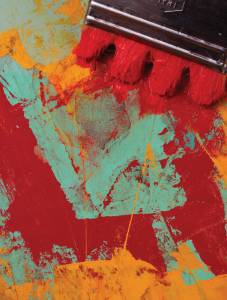
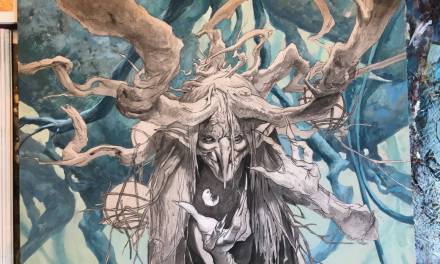
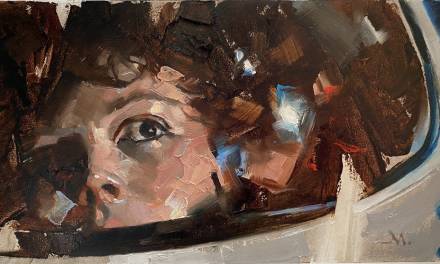
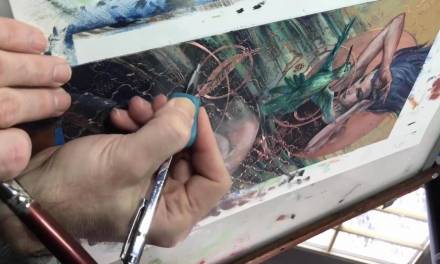
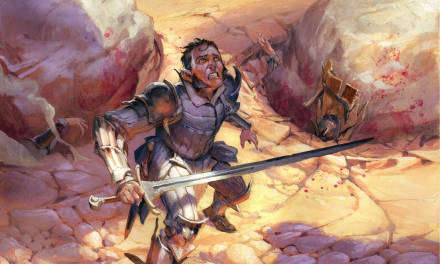

Excellent advice here, thank you for n informative article!
You are so very welcome!